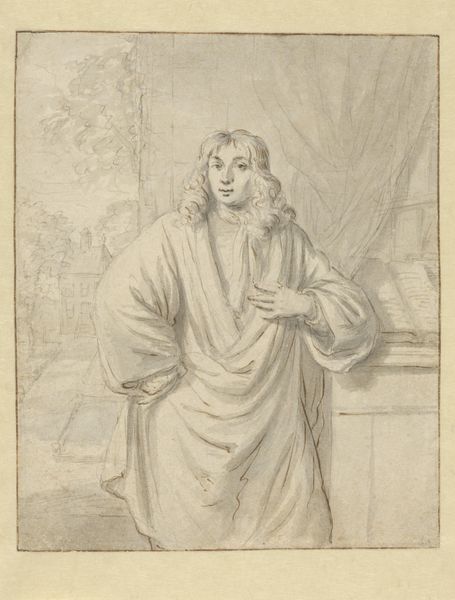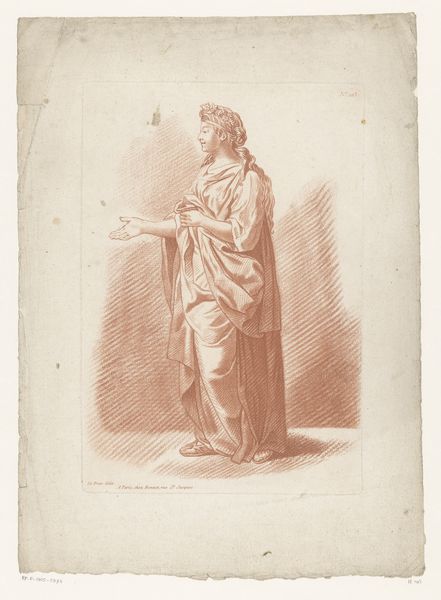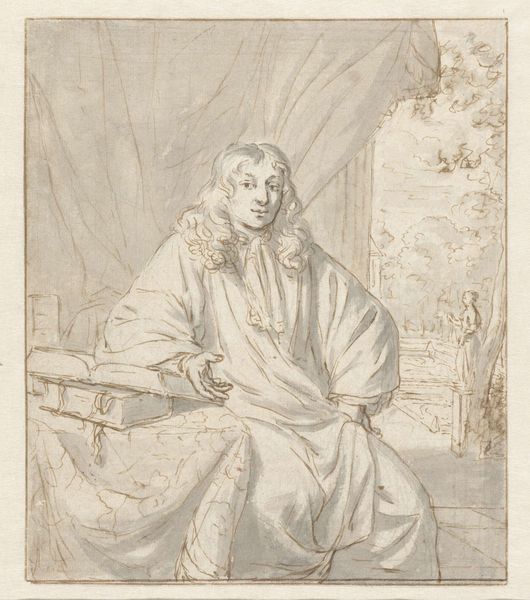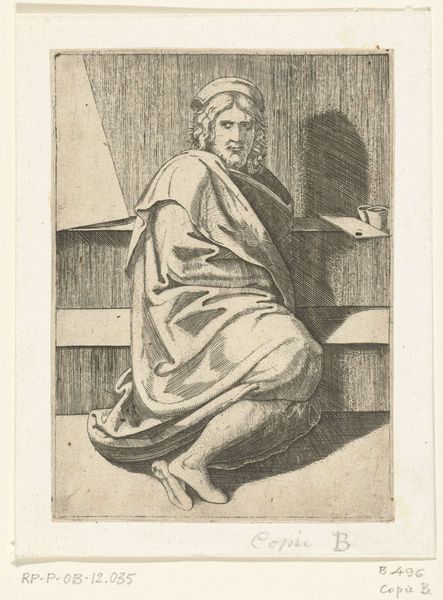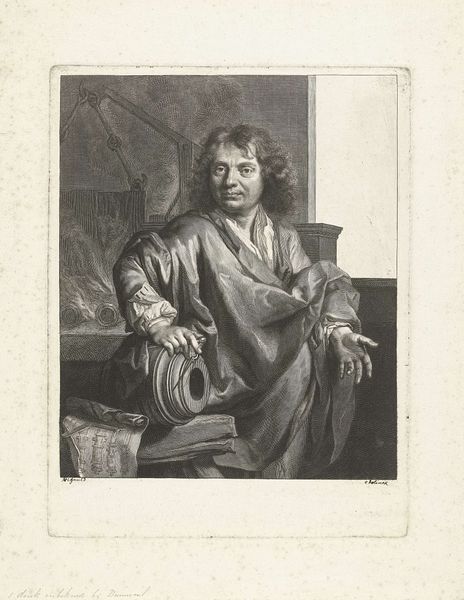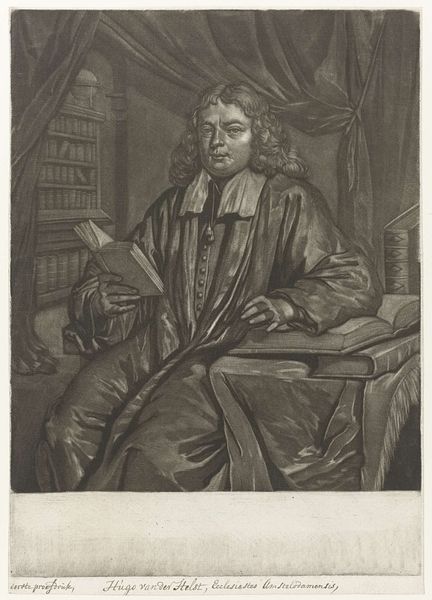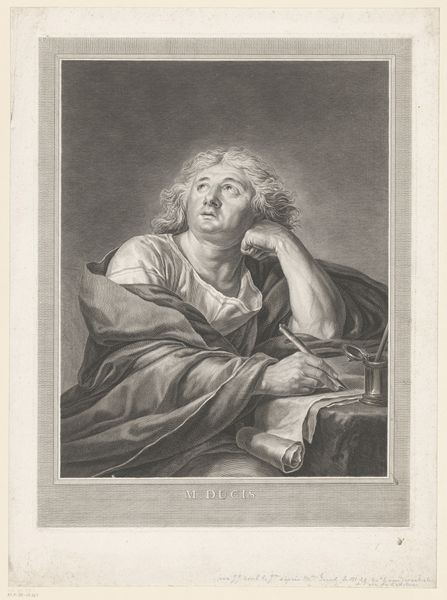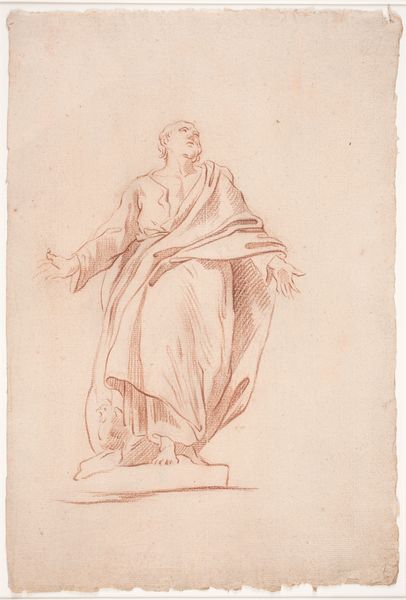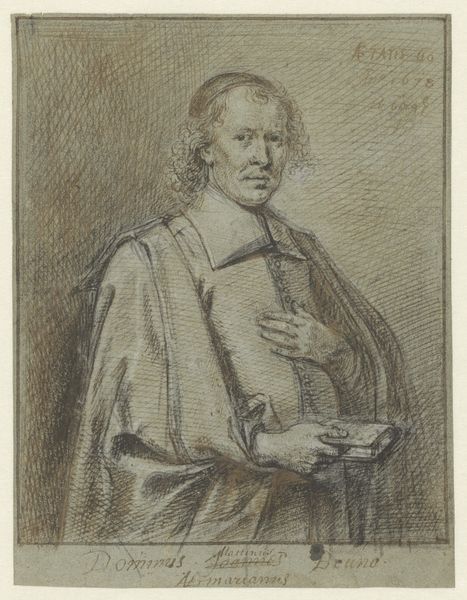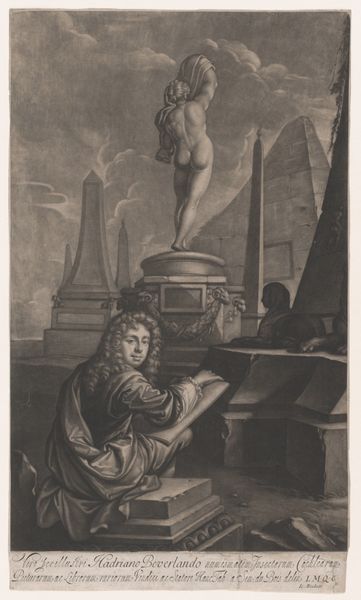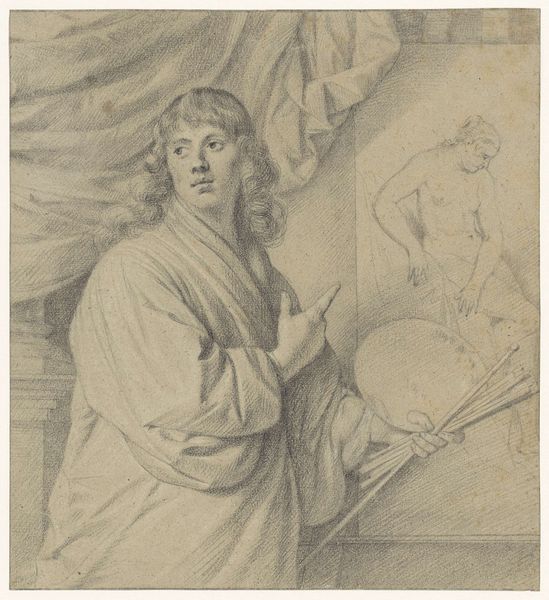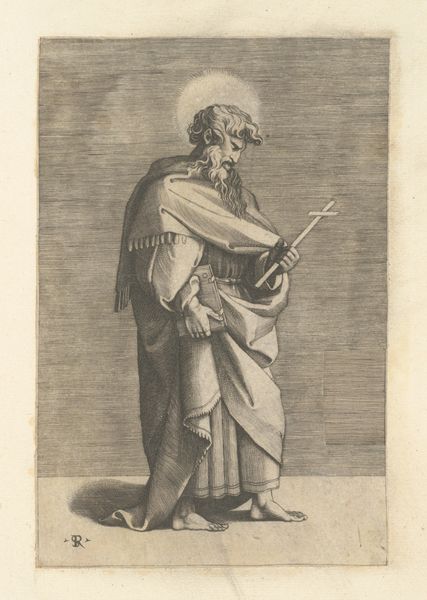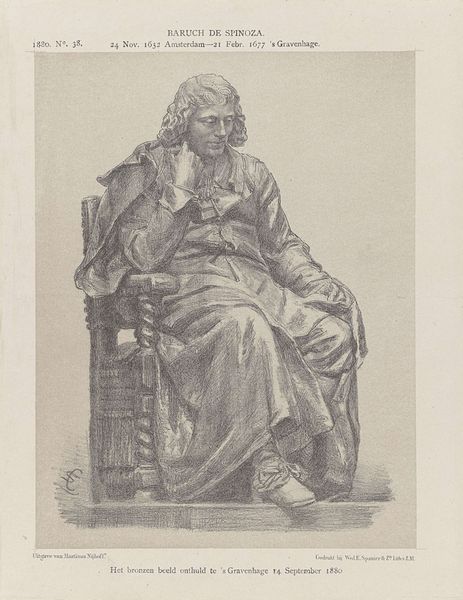
drawing, ink, pen
#
portrait
#
drawing
#
baroque
#
ink
#
pencil drawing
#
pen
#
portrait drawing
#
genre-painting
#
history-painting
Dimensions: height 214 mm, width 176 mm
Copyright: Rijks Museum: Open Domain
Curator: This ink and pen drawing by Jan Verkolje I, created sometime between 1660 and 1693, depicts "Portret van Hugo van der Helst, staand in zijn bibliotheek"—a portrait of Hugo van der Helst standing in his library. Editor: My first thought is how delicate it is, almost ghostly. The lines are so fine, and the wash gives it a muted, ethereal quality. It’s interesting to see a portrait in what is clearly a domestic, intellectual space. Curator: Exactly! We see Van der Helst not just as a subject of status, but within his world of books. These interior scenes reveal a shift in patronage during the Dutch Golden Age, reflecting a growing merchant class interested in depicting themselves within their achieved spaces. Look at the drape of his garment, and the texture achieved with simple washes, this is really quite compelling artisanship on display. Editor: It's intriguing to see how Verkolje uses line and wash. You can almost feel the texture of the paper. I wonder how the materiality of the ink and paper would have influenced its reception at the time. These were precious goods representing new production chains in Europe. Curator: Certainly! And consider the accessibility. While oil paintings were for wealthier patrons, drawings offered a more affordable alternative. It’s fascinating how pen and ink elevated themselves into acceptable mediums for high art. This image suggests a democratisation of art viewership and consumption, and how artistic labor becomes a question of artisanal skill versus academic talent. Editor: You are right, and the library behind him is fascinating—a symbol of status, learning, and intellectual prowess readily accessible through wider publishing networks. The book on which he rests his hand seems like a material manifestation of these same things. Curator: The presentation of van der Helst, draped in what could be interpreted as scholarly robes, is also strategic—implying education, wealth, and cultivated taste to the patron, it signals that Van der Helst wants to portray himself within this lineage of successful people and cultivated elites. Editor: Absolutely. Verkolje positions his client to the burgeoning self-made public as a powerful consumer good. I see the drawing, ultimately, as an object entangled within emerging networks of artistic production, commerce, and class presentation of its time. Curator: And through close examination, we can really explore and better understand both the image and the means and context behind its production. Editor: It is amazing what simple materiality reveals about society!
Comments
No comments
Be the first to comment and join the conversation on the ultimate creative platform.
